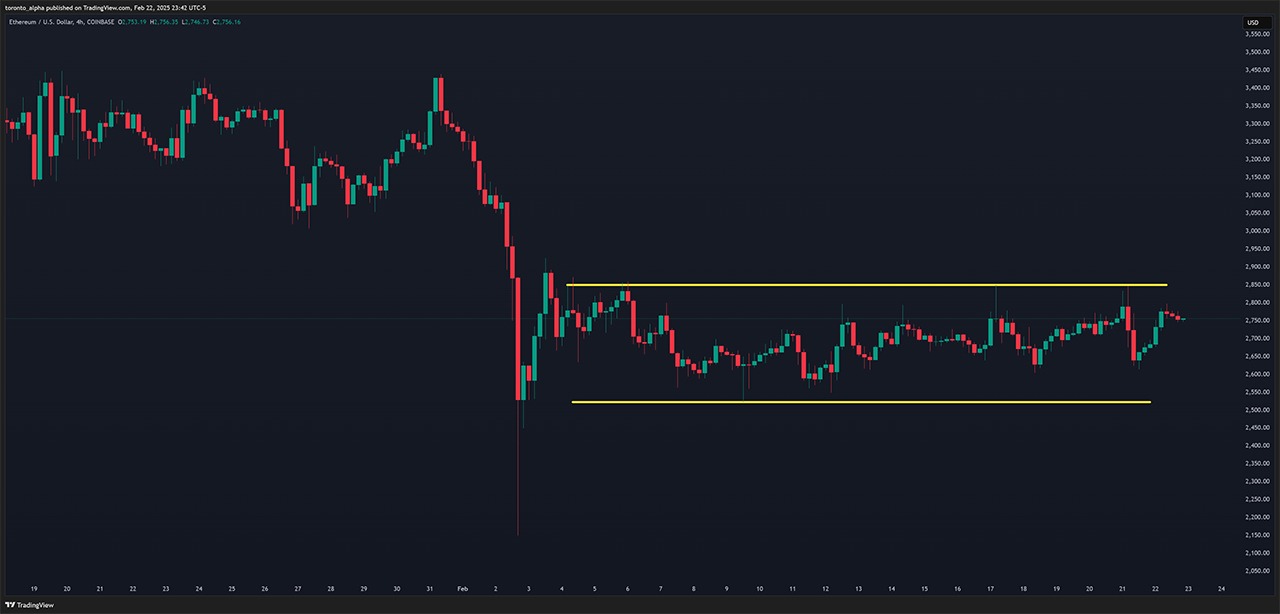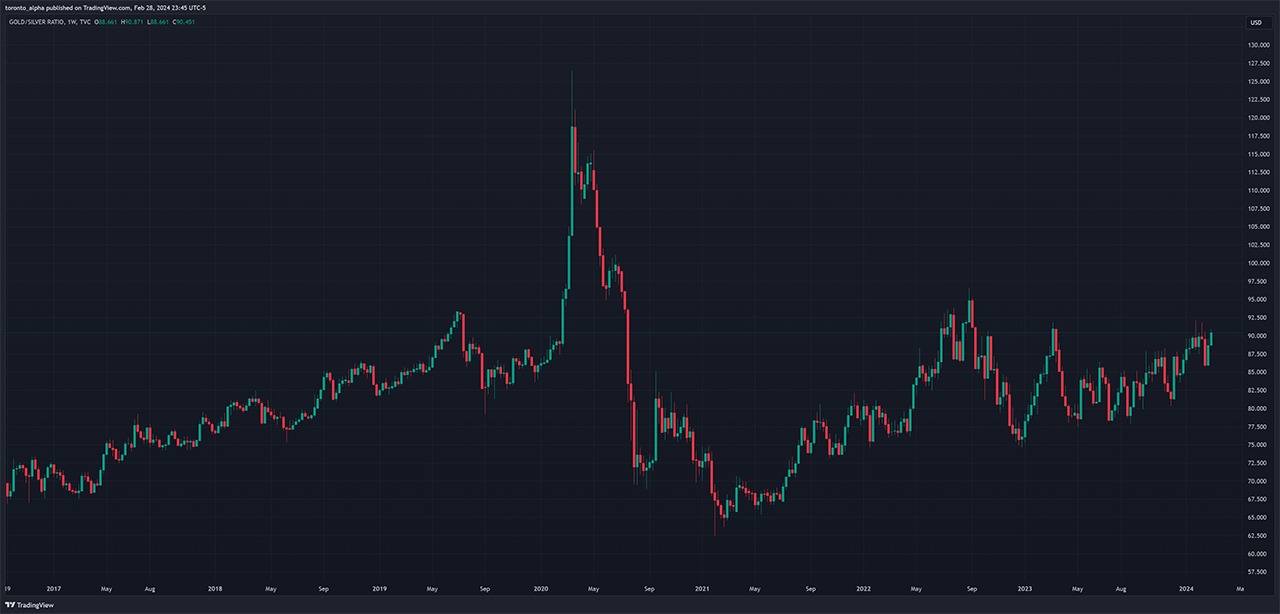In this article, I will explore how to trade the commodity silver, why it can be an attractive asset to trade, and what market drivers affect its price. I will conclude with a summary of the pros and cons of trading silver.
What Is Silver Trading?
Silver trading is simply making money from changes in the price of silver by buying it and then selling it at a higher price or by shorting it and buying it back at a lower price.
What Is Silver and What Is the Silver Market?
Silver has unique properties. It has the highest electrical and thermal conductivity of any element and is the most reflective element across the visible spectrum. These properties make it invaluable in industry and popular in jewellery and, of course, silverware.
The silver market refers to the collective buying and selling of physical silver or silver contracts. It is not a single market or exchange; many brokers and exchanges worldwide offer access to silver.
Why Trade Silver?
Here are seven reasons to trade silver.
- Silver is highly liquid and has excellent technical patterns. Liquidity is my most critical factor for trading anything. Technical analysis relies on crowd psychology, meaning assets with higher trading volumes are more technical, and assets with lower volumes are less technical. Thinly traded assets often jump unpredictably in price as fewer buyers and sellers can change their value. In contrast, a high-volume asset requires many buyers or sellers to alter a trend or create a chart pattern, making those technical patterns more reliable.
- Low spreads. More liquid assets, like silver, have lower spreads and trading costs.
- Traders can either go long or short on silver. Traders can make money from both the rise and fall of silver prices. In a long position, traders make money when the price goes up; in a short position, traders make money when the price goes down.
- Leverage is available on silver. Traders do not have to put down the entire value of the silver they trade. Like Forex, leverage is available on silver, meaning traders can put down a smaller amount of capital (or margin) compared to the value of the trade.
- Different instruments are available to trade silver. There are multiple ways to trade silver, such as futures contracts, CFDs, and options contracts.
- Tradeable price moves. Historically, silver has offered healthy price movements, clear support and resistance levels and extended trends, allowing for plenty of profitable trading opportunities.
- Silver’s real-world uses help build the foundation for its market price. Silver is a physical commodity used in industry. Silver is used in automotive components, batteries, solar cells, water purification, dentistry, medicine, LED chips, brazing, and soldering—the list goes on.
How Does Silver Trading Work?
As mentioned, there are multiple ways to trade silver. Let’s cover the main ones.
- Physical Trading
Investors can buy physical silver bullion and bars. Remember that keeping physical silver often requires secure storage and insurance, which has a cost.
- Futures Contracts
Exchanges such as the CME and ICE offer silver futures, and traders can access them through regulated futures brokers.
Futures are highly leveraged. However, futures brokers often require larger minimum account sizes than CFD brokers.
Regulation and pricing. Many traders prefer futures because of the regulation and a central exchange that controls pricing and fills.
- CFDs
CFDs have many of the advantages of futures without the high minimum account size requirements and other restrictions.
CFDs can easily be traded long or short, i.e., traders can make money on the rise and fall of silver prices.
CFDs have leverage, like Forex and futures.
- Options
Call and put options tied to the value of silver futures, which are available through the CME. Options contracts allow additional leverage and the creation of sophisticated strategies, such as making money when the price lands within a specified range by a certain date.
Exchange-traded Funds (ETFs)
- ETFs can track the price of physical silver or a basket of the shares of companies in the silver industry.
- Stocks in the Silver Industry
Investors can buy or sell stocks involved in the mining, production, and selling of silver, which is an excellent way to get indirect exposure to the asset.
What Moves the Price of Silver?
Unlike currencies with GDP and interest rate announcements or equities with earnings releases, silver does not have a traditional economic calendar as a commodity. However, some economic factors help drive silver prices:
- Economic Demand & GDP H3
- Given the use of silver in industry, a strong global economy produces a demand for silver, which helps strengthen its price. Conversely, a weak global economy will do the opposite. For example, when the financial impact of COVID-19 became apparent in early 2020, the spot price of silver dropped by almost 40% in only four weeks.
- Inflationary Fears H3
- Investors may see silver as a hedge against inflation and can increase in value when the market has inflationary fears.
- Safe-Haven Investment H3
- During political or currency instability, investors can flock towards precious metals, including silver, as a store of value.
The Relationship Between Silver and Gold
Silver and gold prices have historically been positively correlated, and it’s rare to see them trend in the opposite direction over the long term.

Silver/Gold Correlation
Even with their strong correlation, silver and gold values can change significantly relative to each other. The standard way to assess their relationship is through the gold/silver ratio, which measures how many ounces of silver are needed to buy one ounce of gold. The ratio goes up if the price of gold rises relative to the price of silver.

Gold/Silver Ratio Price Chart
CFDs can enable traders to trade the gold/silver ratio directly. For example, if you feel silver is overpriced relative to gold, i.e., you believe the ratio is too low and will increase, you can buy a gold/silver ratio CFD and expect it to rise in value.
Pros & Cons of Silver Trading
Pros
- Silver is liquid and responds well to technical analysis. Silver often shows textbook support and resistance levels, chart patterns and trends, allowing for profitable trading opportunities.
- Traders can go long or short on silver CFDs or futures. This means they can make money on the rise and fall of silver prices.
- Silver offers traders access to leverage and low trading costs. Silver CFDs and futures are leveraged and have low spreads because silver is liquid and widely traded.
Cons
- No economic calendar. Silver has no direct economic calendar determining when and how silver should move.
- The fundamentals of silver are complex. Silver has various industrial uses, plus many silver transactions are purely speculative. This makes understanding silver price moves challenging.
Bottom line
Silver is a great market to trade, with plenty of advantages and few disadvantages. It is liquid with low trading costs and can be traded long and short with leverage. Historically, silver has shown strong trends and great chart patterns. There are multiple ways to trade silver to suit all traders’ needs, from futures contracts, CFDs, option contracts, ETFs, and stocks in the silver industry.
FAQs
How can I trade silver?
CFDs, futures, options, and ETFs are the main ways to trade silver.
Is silver trading profitable?
Silver trading can be profitable because its price movements tend to respect technical patterns.
What are silver trading hours?
Silver trading hours are 24 hours a day during all trading days.
Will silver hit $100 an ounce?
Silver could hit $100 an ounce, but historically, it has never gone over $50 an ounce, so it has a long way to go.
Does silver trade 24 hours a day?
Yes, silver can be traded 24 hours a day.
What is the highest price of silver in history?
The highest price recorded for spot silver was $49.51 an ounce in April 2011.
Can I trade silver on MetaTrader 4?
Yes, silver is available to trade on MT4.
